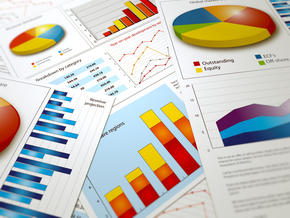
Schools, universities, student groups, and interested individuals will be joining forces to celebrate Mathematics Awareness Month this April.
History of Mathematics Awareness Month
This annual tribute to numbers officially began in 1986 when President Ronald Reagan issued a proclamation for National Mathematics Awareness Week. It expanded to Math Awareness Month in 1999. The Joint Policy Board for Mathematics–a collaborative effort of the American Mathematical Society, the American Statistical Association, the Mathematical Association of America, and the Society for Industrial Applied Mathematics–organize and choose the theme of the annual celebration each year.
Interestingly enough, part of the statement that Reagan read when he proclaimed Mathematics Awareness Week in 1986 could have just as easily been made by President Barack Obama today, as he has also been stressing the importance of mathematics, science, and technology in recent years:
“Despite the increasing importance of mathematics to the progress of our economy and society, enrollment in mathematics programs has been declining at all levels of the American educational system. Yet the application of mathematics is indispensable in such diverse fields as medicine, computer science, space exploration, the skilled trades, business, defense, and government. To help encourage the study and utilization of mathematics, it is appropriate that all Americans be reminded of the importance of this basic branch of science to our daily lives.”
Interview with a Committee Member
I interviewed a member of this year’s committee for Mathematics Awareness month, Professor Gunnar Carlsson from the Department of Mathematics at Stanford University. According to Carlsson, schools mostly decide on their own how to commemorate Mathematics Awareness Month. “Schools generally will host a lecture or series of lectures,” explained Carlsson. “It could be connected with that year’s theme, but often it is designed to make people aware of math’s use in society. Another popular activity is a math competition.”
Mathematics, Statistics, and the Data Deluge
Carlsson went on to state,”‘Mathematics, Statistics, and the Data Deluge’ is the theme for Mathematics Awareness Month this year. The goal is to educate people about how mathematics provide the means to making sense of the immense amounts of data that we use every year. Data is collected from sensor networks, astronomical instruments, and biometric devices. This data needs to be sorted and analyzed. Even personal data in google searches, on Facebook, on Twitter, and credit card purchases are being traced daily. Mathematics can help explore the great opportunities, insights, and dangers in relation to this data.
“The main goal of Math Awareness Month is to alert the public about trends in the subject which are of importance to society. In this case, the problem of obtaining information from large data sets is clearly an important one from many points of view, so it is particularly apt as a topic.”
Integrating the Common Core
Many of the National Common Core standards deal with data and statistics, so this month may be a great opportunity to highlight some standards in a particular project or activity. For instance, one high school standard asks that students “represent data with plots of the real number line (dot plots, histograms, and box plots.)” Such a standard could elicit a myriad of real-world applications for analyzing data in areas including sports, health, military applications, or census patterns, to name a few.
Great Lessons for Honoring Mathematics Awareness Month:
All Choked Up By Smoking Statistics
Investigate different methods of graphing statistics by using data provided in the article “More College Students are Smoking, Study Says.” This can serve as a springboard for discussion on the reasons why people smoke cigarettes, and possibly even a survey to gain more data.
New Kids in The Hall
Assess the role of statistics in determining which athletes are chosen to be inducted into the Baseball Hall of Fame. Small groups will calculate, chart, and graph various statistics for different Hall of Fame members.
Epidemic Proportions
Research epidemics that have devastated world population at various points in history. Then, share and calculate statistics obtained in this research to develop graphs comparing and contrasting how different epidemics affect global population.
The Demographics of Immigration: Using United States Census Data
Assign small groups to analyze United States Census data on immigration. They compare and contrast the data and determine how immigration numbers have changed over time. Other activities include calculating percentages and drawing their own conclusions about the implications of the data.

